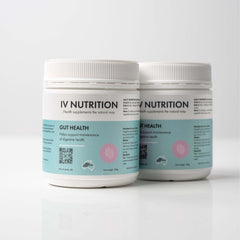The Gut Microbiota Clock: The Close Connection Between Gut Microbiota and Dietary Patterns
In recent years, science has illuminated the vast, intricate relationship between the gut microbiota and virtually every system in the human body. But what’s even more fascinating—and often overlooked—is how the timing and composition of our dietary patterns can influence the circadian rhythm of the microbiome itself.
This relationship has led to a growing body of evidence supporting the existence of a “gut microbiota clock”—a diurnal rhythm in microbial activity that synchronizes with our eating habits, sleep cycles, and metabolic needs. When this biological clock falls out of sync due to erratic eating, high-fat diets, or ultra-processed food intake, it can ripple through the body, disturbing metabolic, immune, and even mental health.
In this comprehensive article, we’ll explore the scientific foundation of the gut microbiota clock, how dietary patterns regulate or disrupt it, and how prebiotic fibers—like IV Nutrition’s Virgin Manufactured Sugarcane Prebiotic Fiber—play a critical role in maintaining microbial rhythm and gut health.
Table of Contents
-
Circadian Rhythms and Gut Microbiota: The Bidirectional Axis
-
The Role of Prebiotic Fibers in Resynchronizing the Gut Clock
-
IV Nutrition’s Virgin Manufactured Sugarcane Prebiotic Fiber: A Restorative Ally
What Is the Gut Microbiota Clock?
The concept of the gut microbiota clock refers to the daily (circadian) oscillations in the composition, gene expression, and metabolite production of gut microbes in response to host behavior—primarily feeding and fasting cycles.
According to a seminal study published in Cell (Thaiss et al., 2014), the gut microbiota exhibits diurnal fluctuations that mirror the body’s internal circadian rhythm. These changes influence:
-
Metabolism (e.g., lipid and glucose regulation)
-
Gut permeability and immune readiness
-
Production of key metabolites like short-chain fatty acids (SCFAs)
The gut microbiota is not merely a passive responder—it actively contributes to synchronizing peripheral circadian clocks in organs like the liver and intestines.
Circadian Rhythms and Gut Microbiota: The Bidirectional Axis
Human circadian rhythms are governed by the suprachiasmatic nucleus (SCN) in the brain, which responds primarily to light cues. However, peripheral clocks—found in the liver, intestines, and adipose tissue—are highly responsive to timing and content of food intake.
This is where the gut microbiota comes in. Studies suggest a bidirectional relationship between circadian clocks and microbiota:
-
Microbial populations fluctuate with feeding times.
-
These microbes release metabolites (e.g., butyrate, secondary bile acids) that regulate host clock gene expression.
-
In turn, host circadian genes (like Bmal1, Per, and Cry) modulate microbial niche environments (Journal of Biological Rhythms).
Visual: Diurnal Microbiota Fluctuations
| Time of Day | Dominant Microbes | Key Metabolic Activities |
|---|---|---|
| Morning | Lactobacillus, Bifidobacterium | SCFA production, immune readiness |
| Midday | Clostridia, Firmicutes | Carbohydrate fermentation, energy harvest |
| Evening | Bacteroides | Protein metabolism, bile acid modulation |
| Night | Microbial diversity contracts | Mucosal maintenance, regeneration |
Dietary Patterns and Their Impact on Microbial Rhythmicity
Food intake is one of the most powerful zeitgebers (time cues) for the gut microbiota. Both what and when we eat shape microbial oscillations and their impact on the host.
1. Regular Meal Timing
Intermittent fasting and time-restricted feeding (e.g., 16:8 patterns) have been shown to:
-
Increase microbial diversity
-
Reinforce microbial rhythmicity
-
Enhance SCFA production and metabolic flexibility (Cell Metabolism)
2. High-Fat, High-Sugar Diets
Western-style diets disrupt circadian microbial patterns by:
-
Reducing microbial diversity
-
Abolishing natural diurnal fluctuations
-
Promoting growth of Proteobacteria and endotoxin-producing strains
These changes are linked to metabolic syndrome, insulin resistance, and neuroinflammation (Nature Reviews Endocrinology).
3. Fiber-Rich, Plant-Based Diets
Diets rich in soluble fiber and resistant starch support a thriving microbiota clock by:
-
Promoting fermentation into SCFAs
-
Feeding beneficial microbes like Faecalibacterium prausnitzii
-
Improving host sleep and circadian gene expression (American Journal of Clinical Nutrition)
Disrupted Microbial Clocks: Health Implications
When microbial rhythms fall out of sync with the host, it leads to a condition known as “microbial jet lag.” This desynchronization can have cascading effects:
1. Metabolic Dysregulation
Irregular eating patterns flatten microbial oscillations, leading to:
-
Impaired glucose tolerance
-
Increased adiposity
-
Elevated triglycerides
2. Inflammation and Immune Dysfunction
Loss of microbial diversity and rhythmic SCFA production contributes to:
-
Leaky gut (increased intestinal permeability)
-
Chronic low-grade inflammation
-
Autoimmune risk
3. Neurobehavioral Disorders
Microbial disruption may disturb melatonin and serotonin pathways, affecting:
-
Mood regulation
-
Sleep quality
-
Cognitive performance (Frontiers in Neuroscience)
The Role of Prebiotic Fibers in Resynchronizing the Gut Clock
Prebiotic fibers are key dietary components that support microbial homeostasis and circadian synchronization.
What Are Prebiotics?
Defined by ISAPP as "a substrate that is selectively utilized by host microorganisms conferring a health benefit" (ISAPP), prebiotics include:
-
Inulin
-
Fructooligosaccharides (FOS)
-
Galactooligosaccharides (GOS)
-
Resistant starch
-
Sugarcane-derived soluble fibers
How Prebiotics Restore the Microbiota Clock:
-
Feed butyrate-producing bacteria, enhancing colonocyte energy and circadian regulation
-
Reinforce tight junction proteins, reducing inflammation
-
Promote microbial diversity and diurnal stability
-
Enhance SCFA-mediated epigenetic regulation of clock genes in intestinal tissue
In a controlled trial, daily intake of inulin-type prebiotics for two weeks improved sleep-wake cycles, microbial richness, and morning cortisol regulation (Scientific Reports).
IV Nutrition’s Virgin Manufactured Sugarcane Prebiotic Fiber: A Restorative Ally
For those looking to enhance gut microbial health while supporting their circadian rhythm, IV Nutrition’s Virgin Manufactured Sugarcane Prebiotic Fiber provides a clinical-grade, plant-based solution.
Why Sugarcane Fiber?
Unlike synthetic fibers or heavily processed formulations, IV Nutrition’s product is:
-
100% plant-based and manufactured from virgin sugarcane, not byproducts
-
Naturally high in soluble fiber that supports SCFA-producing bacteria
-
Gentle on the gut and suitable for daily use—even in sensitive populations
Clinical Benefits:
-
Supports natural microbial oscillations
-
Enhances butyrate production, a key regulator of circadian genes
-
Helps mitigate the negative impact of high-protein or low-fiber diets
-
May aid in appetite regulation, mood balance, and immune readiness
Special Offer: 100% OFF Your First Tub
For a limited time, get your first tub free when you subscribe here:
Claim Your Offer – Virgin Sugarcane Prebiotic Fiber
Clinical Perspectives and Future Research Directions
The emerging science of microbial circadian biology opens new frontiers in nutrition and preventive medicine.
Clinical Applications:
| Application Area | Gut Clock Relevance |
|---|---|
| Chrononutrition | Timing meals to align with microbiota rhythms |
| Sleep disorders | Restoring microbial balance to enhance melatonin pathways |
| Metabolic syndrome | Improving insulin sensitivity through timed feeding and prebiotics |
| Mental health | Modulating gut–brain axis via rhythmic SCFA production |
Research Frontiers:
-
Microbiota-targeted chrono-therapeutics
-
Role of postbiotics in circadian signaling
-
Personalized nutrition for circadian alignment based on microbiota profiling
-
Effects of jet lag, night shift work, and light exposure on microbial rhythms (Nature Communications)
Conclusion
Your gut has a clock—and it ticks in harmony with your meals, sleep, and even mood. Disrupting this rhythm through erratic eating, low-fiber diets, or ultra-processed foods can reverberate through the body, increasing the risk for a host of chronic conditions.
To protect and support the gut microbiota clock, focus on:
-
Regular meal timing and circadian-aligned eating
-
Emphasizing whole, fiber-rich plant foods
-
Supplementing with targeted prebiotics, like IV Nutrition’s Virgin Sugarcane Prebiotic Fiber
Science is beginning to prove what ancient wisdom has long suggested: health starts in the gut—and timing matters.





